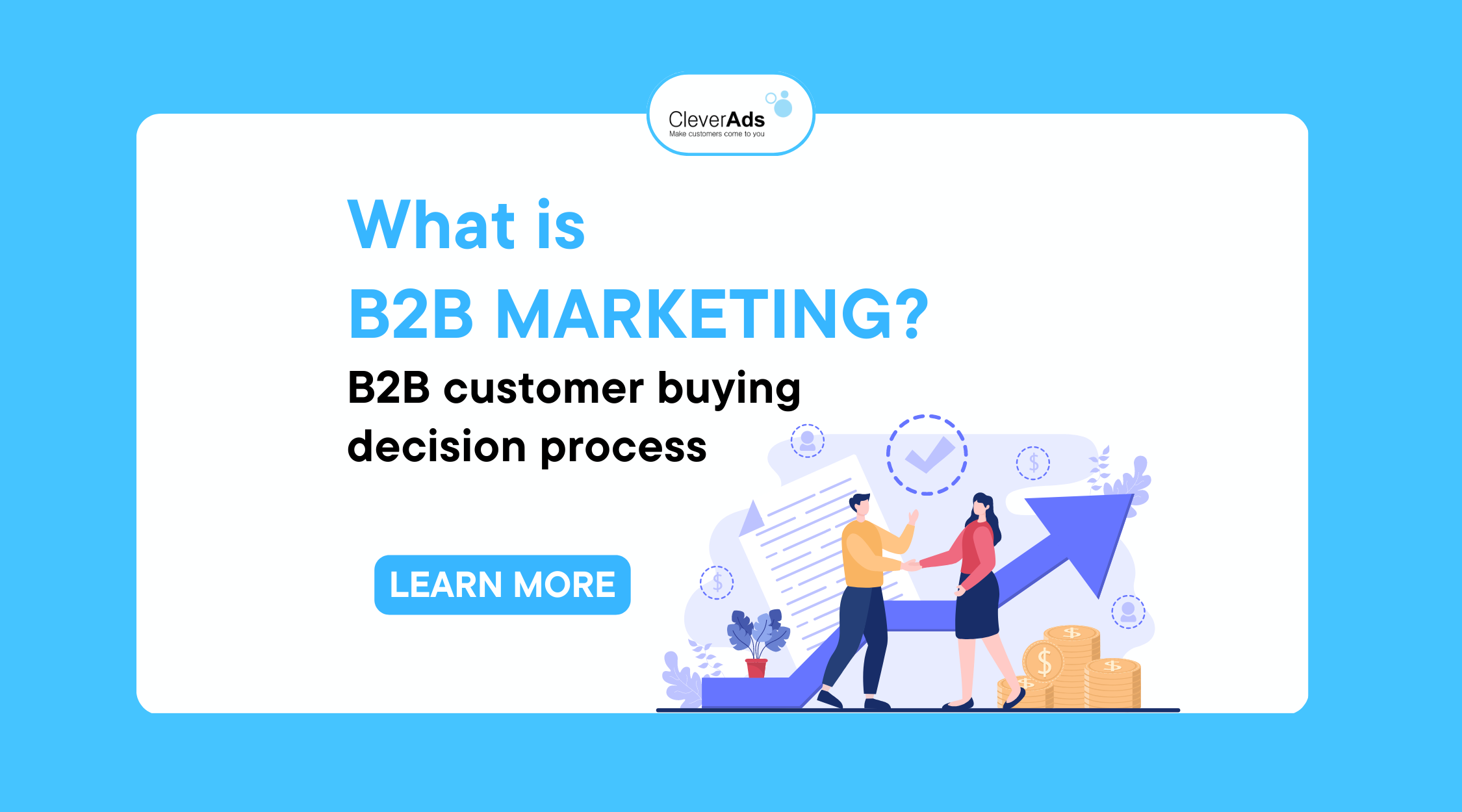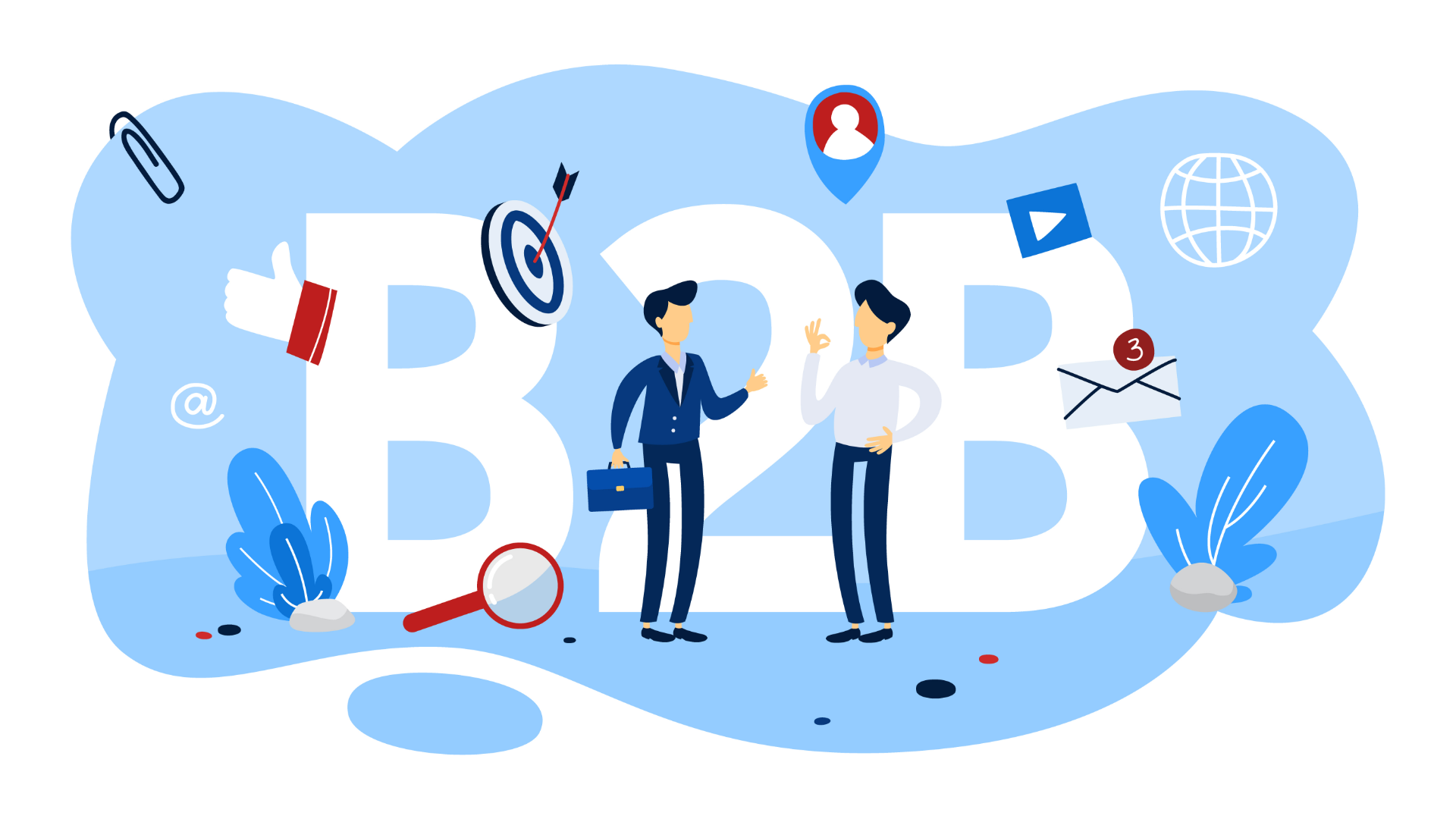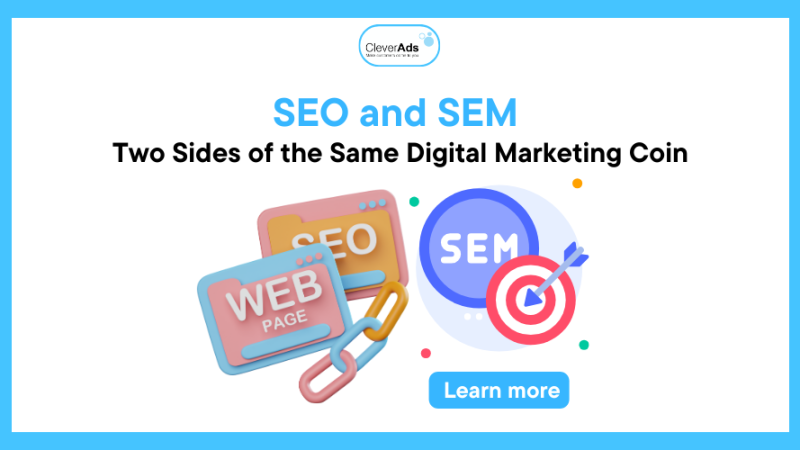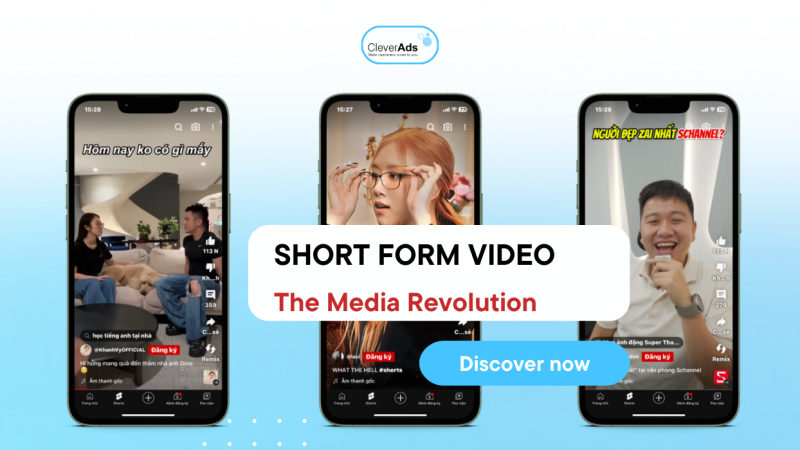What is B2B marketing? B2B customer buying decision process

To optimize a marketing strategy, the most important thing for businesses is to define their target audience accurately. In particular, some businesses serve individual customers, but others serve institutional customers (business customers), and there are different characteristics between these two types of customers. What is B2B marketing? What is the B2B customer buying decision process? Let’s find out with CleverAds in this article.
1. The role of B2B marketing
B2B marketing was originally also known as industrial marketing with the definition that marketing activities are carried out for suppliers to bring industrial products such as machinery systems, equipment, materials, and industrial services to customers who are industrial production enterprises to achieve the desired effect.
It was in the 80s that the concept of B2B marketing was officially formed as a marketing activity performed between suppliers, manufacturers, and distributors to achieve business efficiency (sales and profits) desired by the parties.
In addition, in a broader sense, B2B marketing is also marketing activities aimed at satisfying the needs of organizations’ customers by providing goods and services for direct or indirect use.
The nature of B2B marketing is one of the specific marketing fields, having a “wholesale” nature, and is applied in exchange activities between organizations, with a non-personal nature. In particular, B2B marketing has many characteristics that are different from B2C marketing.

2. Characteristics of the B2B marketing market
Concentration properties of the bridge
The number of buyers in the institutional customer market is less, but the volume of purchases is larger than in the consumer market. Demand in the institutional market is concentrated in a few, often pre-defined, customers, and these customers are often more geographically focused.
Organizations and businesses are often concentrated in urban areas and industrial zones instead of scattered like the consumer market. Marketing to organizational customers often has to be in direct contact with customers, but the business can control the number of these customers.
Derivative properties of demand
Much of the demand in the institutional market stems from the need for the product at the end consumer market. If the demand of the final consumers falls, so does the demand for the means of production necessary to make them. Demand in the industrial market will increase or decrease, changing with the change in need in the consumer market.
This derivative of demand has caused demand in the institutional market to fluctuate strongly. A small percentage increase in consumer demand can lead to a large percentage increase in capital demand:
When demand in the consumer market decreases by 5%, the demand in the industrial market can drop by 30-50%.
The result is similar. If demand in the consumer market increases by 5%, increasing the number of input products causes the demand in the industrial market to increase by 180% compared to before.
Price inelasticity of demand
The price elasticity of demand in the institutional customer market often needs to be improved. But on the other hand, aggregate demand for industrial products is less affected by price because of the close relationship with sellers and to ensure the production and business process is always carried out.
Because institutional customers often buy with large orders, retaining that customer is essential for suppliers. Every time the price changes, the supplier has a warning action and the reason for the price change for customers to understand and accept. Furthermore, institutional customers often buy on a pre-defined schedule with an existing contract, so the price does not immediately affect the purchase.
Buyers are more professional.
The name “procurement specialist,” “equipment administrator,” and “materials department staff” are often used to refer to representatives whose main task is to purchase this item. The goal of the purchasing department is to buy the best products at the most reasonable prices, along with a warranty and payment policy suitable to the conditions of the organization. Thereby, they help to save input and operating costs and, thus, increase the organization’s operational efficiency.
Their buying behavior involves more parties involved in the buying decision-making process.
Organizations often have a department dedicated to purchasing, so discussing purchasing procedures is also professional. They will provide all the information the supplier requires, but in the meantime, they still want a lot of information about other suppliers. This department is also very knowledgeable about the product.
Buying decisions are more complicated.
This feature is because many people in many different departments are involved in the buying decision process. The more influence a product has on a company’s operations, the more users it has, and the more complex the buying decision process becomes.
From the value supply system perspective, buyers and sellers in the institutional customer market are very closely interdependent. The success of one organization will create opportunities for the other and vice versa. As a result, institutional sellers often view institutional customers as business partners rather than simply customers.
The relationship between customers and businesses in B2B marketing is very close.
Organizational customers buy products for the next production and business process, so they will require suppliers to provide regular, continuous, and guaranteed goods for their next production and business process.
In addition, institutional customers often buy on a large scale, so sellers – businesses also need to build relationships with customers to maintain and strengthen customers. They often produce to order according to standards. The customer specifies design techniques. This relationship is usually direct, without intermediaries.

3. Trends of B2B Marketing
In recent years, the strong growth of the B2B market has increased significantly. As a result, the volume of currency and goods exchanged between institutions is much larger than in the consumer market.
The above business units, including consumer goods businesses, must participate in the institutional market. For a product or service to be marketed, consumers must purchase various inputs.
Institutional customers are businesses and organizations belonging to the state apparatus, schools, and hospitals. In the future, the institutional customer market will develop even more intensely due to changes in the management and administration of the economy in operating enterprises’ business activities.
The trend of shifting from transactional marketing to relationship marketing
For existing customers: Enterprises will consider developing transaction relationships into long-term exchange relationships as the focus, treating transactions as just routine buying and selling activities that will save money on attraction costs. Customers, since existing customers often require fewer service costs than new customers.
Establish, maintain, and develop “strategic customers.”
These are customers who have: (i) long-term profitability, (ii) long-term loyalty to the organization, (iii) are potential customers when the organization provides new products and services, (iv) are less sensitive to prices and activities of competitors, (v) actively contributing to the product and activities of the supplier organization (referring valuable new customers, promoting the product well, brands, etc. to contribute valuable ideas to the product improvement activities, production processes, etc. of the supplier organization)
4. Organizational customer buying decision process
4.1. Problem Awareness
The procurement process begins when someone in the organization becomes aware of a problem or need that can be met by purchasing a good or service.
Internal actors may include: the decision to develop a new product; some equipment or machinery is damaged, it is necessary to replace or buy new spare parts; renewing and retool obsolete fixed assets; materials are not suitable for the production of the product, or the business has the opportunity to purchase the product at a lower price and with better quality.
External stimuli may include reference to the production and business process, the sources of supply of other businesses, or the idea of buying a product that may come from viewing exhibitions, advertising, or contacting other companies. Supplier’s product introduction promotion program. The seller needs to be the agent that makes the organization’s needs or desires manifest
4.2. Brief description of needs in B2B Marketing
After being aware of the need, the buyer must determine the general characteristics and quantity of the item in demand. With new products, the demand needs to be clarified; this job requires time and understanding.
The buyer must, along with others such as engineers, users, etc., determine the common characteristics of complex items. For example, they must assess the importance of the item’s reliability, durability, price, and other desirable properties.
In this step, buyers need information related to the goods they intend to buy. The seller advises approaching the customer from the beginning, joining early to help, describe and define the different criteria.
Come up with the technical design that the customer wants. It will become the standard for the customer to refer to throughout the purchasing process, and competitors will need help to change these standards.
4.3. Evaluate product features
A group of technical experts carries out this process, which the company’s management decides.
Their task is to rely on value analysis (cost-effectiveness analysis) to determine the advantages of each type of product to be purchased, both from a technical point of view and an economic one.
Buyers must codify the product’s characteristics, quality, and specifications to determine if it’s suitable or needs a redesign. The seller advises based on these standards to position their products in the market. Once you’ve chosen your target audience and positioned your product, it’s time to look to the most important buying influences to showcase the features customers expect.
4.4. Looking for a supplier
Customers need to search for information about potential suppliers and call for tenders to determine the most reasonable supplier.
Buyers can research the following primary sources of information:
- Trade publications such as industry trade directories, telephone directories, advertisements, trade shows, and exhibitions
- Internet search
- Through other companies
- Direct contact with suppliers
- Internal information (report of purchasing department).
The result of the analysis is a ranking of potential suppliers. Buyers may prefer several, not just one, suppliers. Seller advice is to provide buyers with complete information. Suppliers who are incompetent or have a bad reputation will be rejected. Qualified individuals will be invited to meet and review.
4.5. Ask for an offer
At this stage, the buyer invites qualified suppliers to submit an offer. The supplier will send the catalog or send a sales representative. The buyer will ask each supplier to submit a detailed offer for complex or expensive items. The buyer will eliminate some suppliers, and the rest will do the final presentation.
Seller advice:
- The seller must be qualified to research, write and present the offer
- Offers should be marketing documents, not technical documents
- The oral presentation must create trust
- The documents provided are complete, highly reliable
4.6. Supplier selection in B2B Marketing
The buying centers will consider the supplier’s characteristics and point out each supplier’s relative importance and strengths, thereby determining the most attractive supplier. Then, one or several suppliers will be selected to provide the necessary quantity and quality of products, making the following business process easier and more efficient.
The members of the shopping center will carefully study the offers and select the suppliers. In addition, they analyze technical capacity and consider contract performance and after-sales service.
Commonly used analytical methods are: list the attributes they require and expect from the supplier and determine the importance of each attribute by a scoring method.
4.7. Make an order
Customers will list and choose the methods of ordering and product delivery with detailed orders. Suppliers need to handle and respond to customer needs urgently. Usually, the customer and the supplier agree on the above conditions to determine the price and quantity to be sold and the required product quality. And the supplier needs to deliver the goods according to the contract.
The work performed in this step is professional by professional purchasing staff.
Both parties try to concretize the conditions and requirements related to the purchase and sale, such as The most important point that buyers care about is whether it is easy to sign a purchase and sale contract. How responsive is the seller to the things they want to adjust?
Seller advice:
- Helping buyers fulfill orders quickly and accurately with commitments to meet buyer needs better than competitors.
4.8. Result evaluation
During this phase, the buyer reviews the performance of specific suppliers.
Buyers typically apply three methods:
- Contact people who use your products or services and ask them for their feedback
- Evaluate suppliers against several criteria using a weighted scoring method
- Calculate the total costs incurred by the supplier to fulfill the wrong order to request a purchase price adjustment.
Customers will evaluate and consider the purchased product: is it capable of integrating and performing its role or not? Does it satisfy their needs? Performance appraisals can lead buyers to continue purchasing, changing, or eliminating suppliers.
Evaluating and collecting customer feedback on their satisfaction when buying and using products is essential for businesses to improve outcomes and associated business quality, maintain and build customer trust, and build loyal customer groups.
CONCLUSION
Marketing will only be effective if businesses identify the right audience. In particular, B2B marketing has completely different characteristics than B2C marketing. Therefore, CleverAds hopes that the information provided above will be helpful to readers.
If your business requires Digital Marketing solutions, contact us at cleverads.com.ph. for the fastest support.



